NEC EX341R Monitor Review
Why you can trust Tom's Hardware
Grayscale, Gamma & Color
Grayscale Tracking
Our grayscale and gamma tests are described in detail here.
The EX341R has nine color temp presets and five of them are adjustable. Each starts at a specified temperature, expressed in Kelvins of course. Setting 4 is labeled sRGB, so that’s where we made our adjustments.
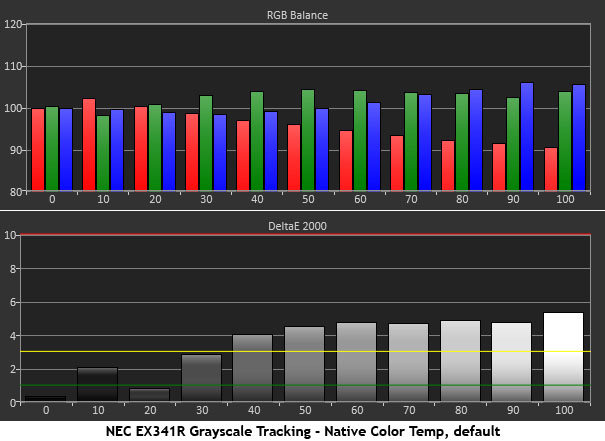
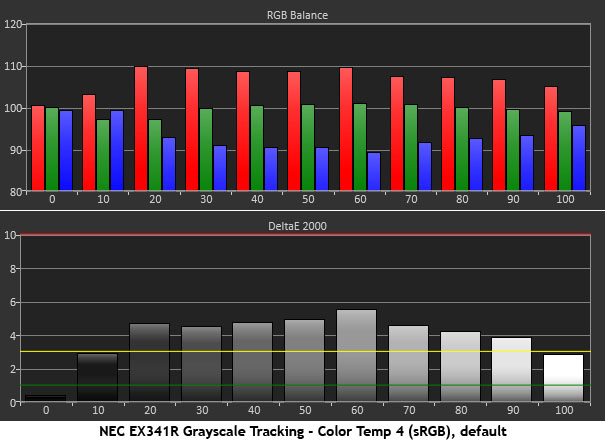
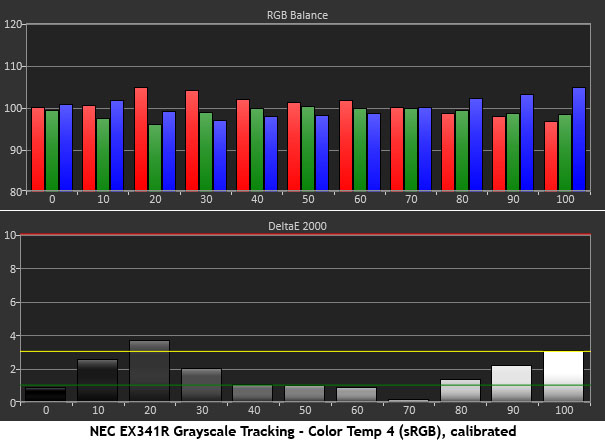
Native is the EX341R’s default setting, and you can see it runs more blue/green as brightness levels rise; red roll-off is the culprit. The errors are visible, and we recommend an OSD calibration at minimum.
The default state of the sRGB preset is clearly too warm with very high red levels throughout. This error is clearly visible as well and averages 4.31dE. A few changes of the RGB sliders takes us to . . .
. . . a chart that is not quite what we expected. We’re picking nits here because the image looks fine, but bear with us a moment. What concerns us is the non-linearity of the grayscale tracking. If there were a blue or green error across the board, that would be typical. But to see the tracking change from red to blue-forward is unusual. It required some compromise during our calibration to achieve this result.
Normally, we adjust an 80% pattern and everything falls in line. That approach left us with visible errors both above and below that point. By tweaking the sliders with a 30% pattern, we reduced the total error to where only 20% has a barely-visible issue. This isn’t a huge problem, but we expect more from NEC given its history of producing supremely accurate displays. Bottom line, SpectraView II will extract the EX341R’s maximum performance. We didn’t have in on hand for this review, but we’re confident it would produce better grayscale tracking.
Comparisons
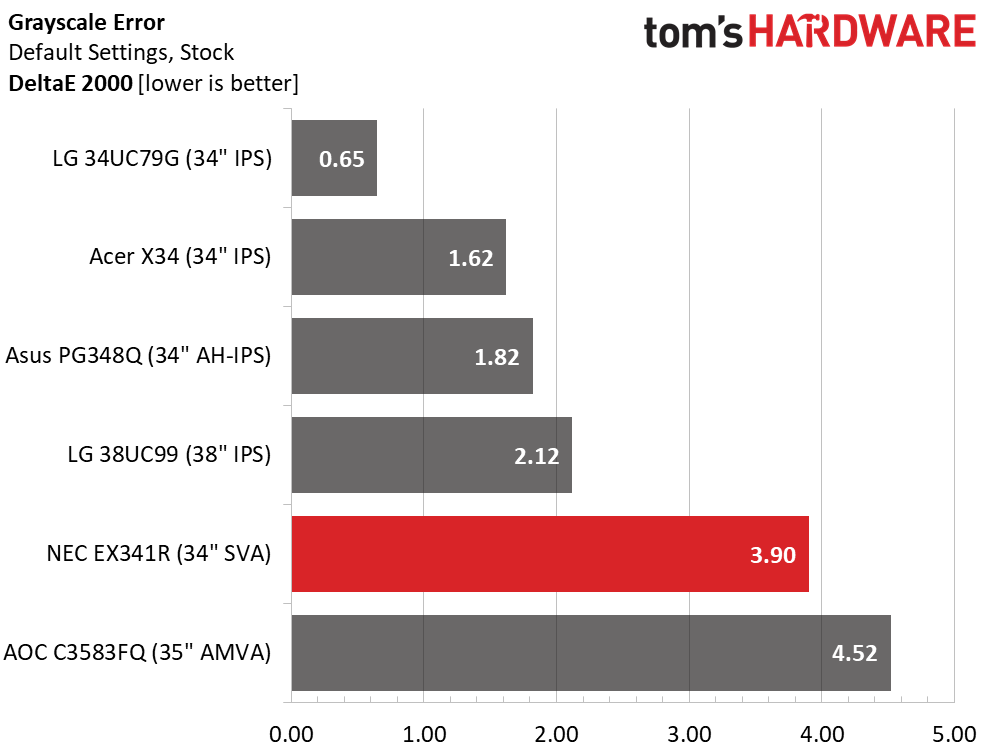
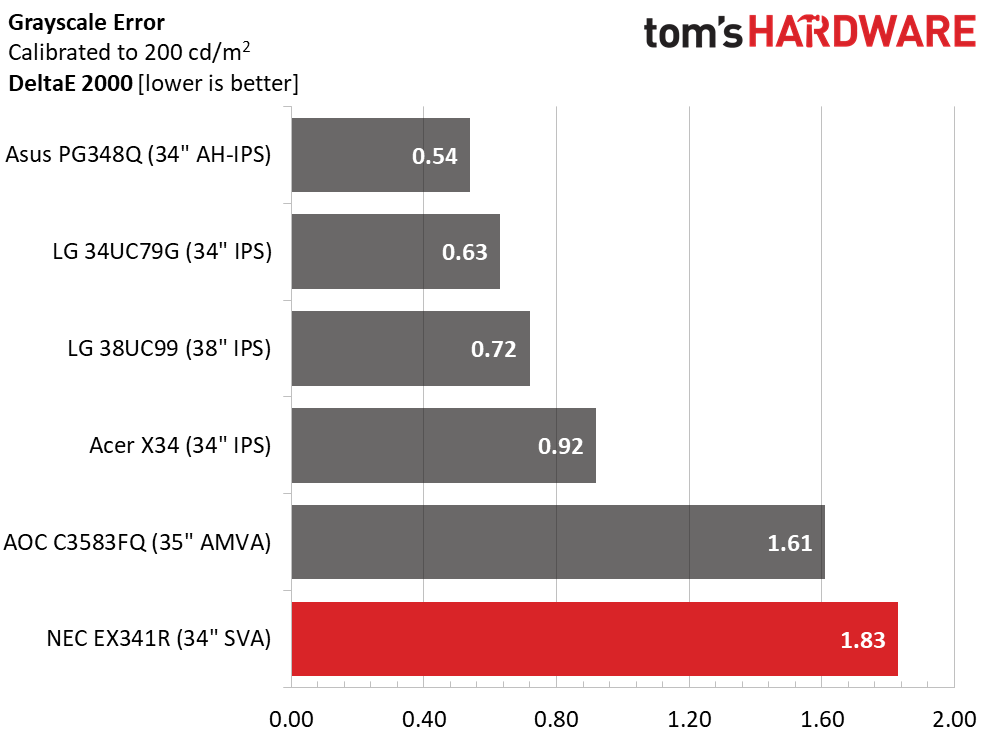
We think a $1000 display should be ready to go out of the box with no need for calibration. The reality is that many such monitors need adjustment to get their grayscale errors under 3dE. The EX341R misses the mark by a small margin. After calibration, the errors are invisible at 1.83dE average, but tracking is not as smooth as many other displays at this price point.
Get Tom's Hardware's best news and in-depth reviews, straight to your inbox.
Gamma Response
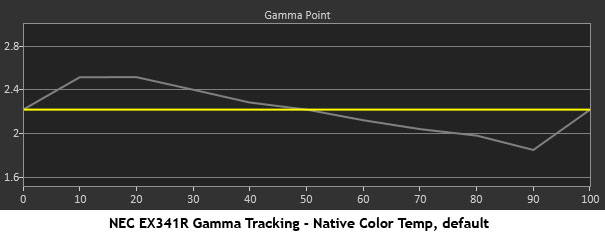
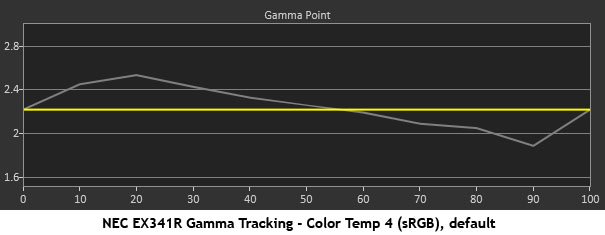
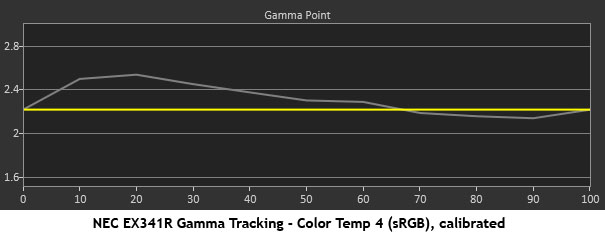
Gamma was another area where we had to make some compromises. The default chart, representing the EX341R’s Native mode, shows dark tones at the low end and bright ones up high. The same thing occurs in the default state of the sRGB preset. There is no gamma control here, so we tried the Black Level slider to see if it would help our cause. It did nothing at the low end but reduce black levels. To fix the other side of the chart, we resorted to lowering the contrast slider. That helped eliminate some clipping in blue and took gamma to a decent, if not ideal state. Again, we recommend SpectraView II for the best gamma performance. And it will allow you to dial in different specs like BT.1886 for example.
Comparisons
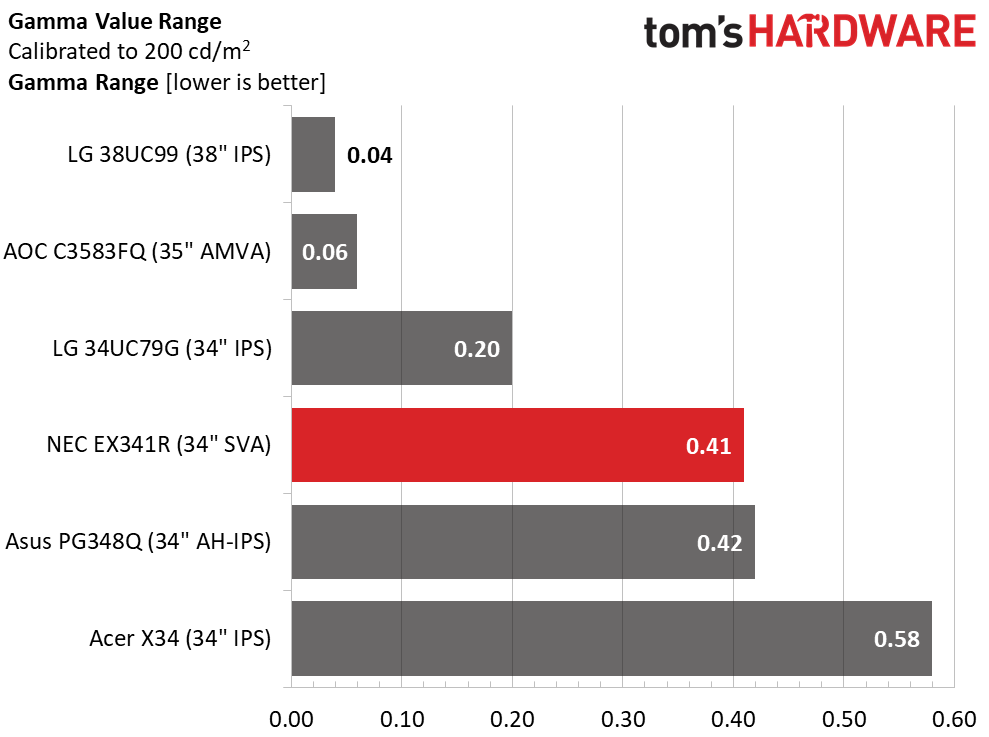
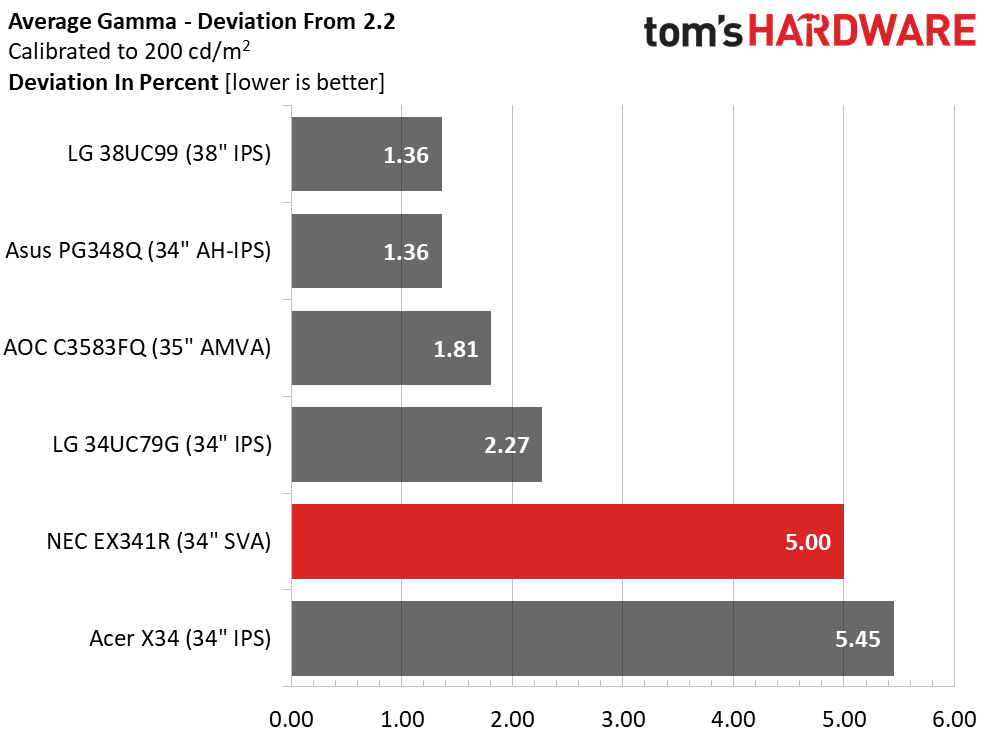
Despite a less-than-ideal gamma trace, the EX341R stacks up reasonably well to the competition. Its .41 range of values puts it comfortably in fourth place. An average of 2.31, mostly due to low-end tracking, drops it down to fifth. The one saving grace here is the panel has plenty of contrast to compensate for its dark shadow tones. You can still clearly see detail in even the gloomiest content.
Color Gamut & Luminance
For details on our color gamut testing and volume calculations, please click here.
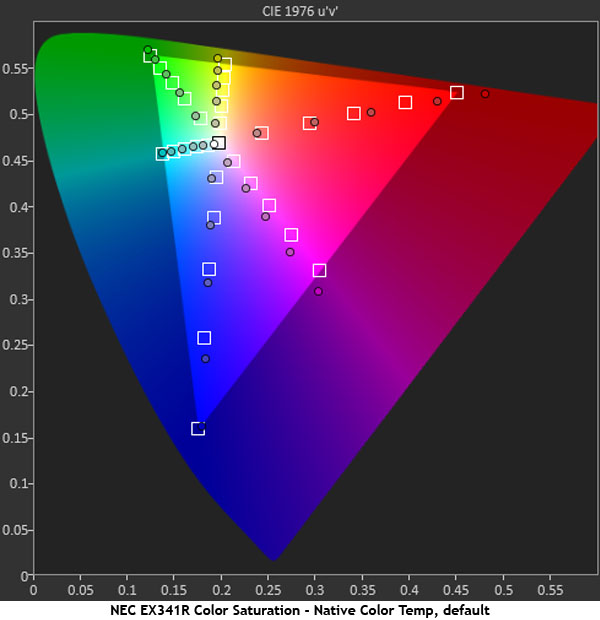
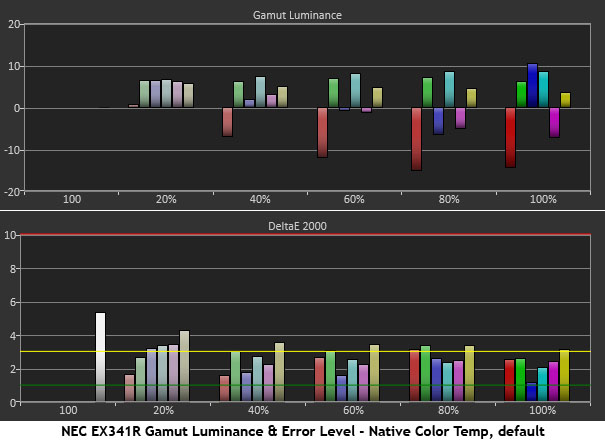
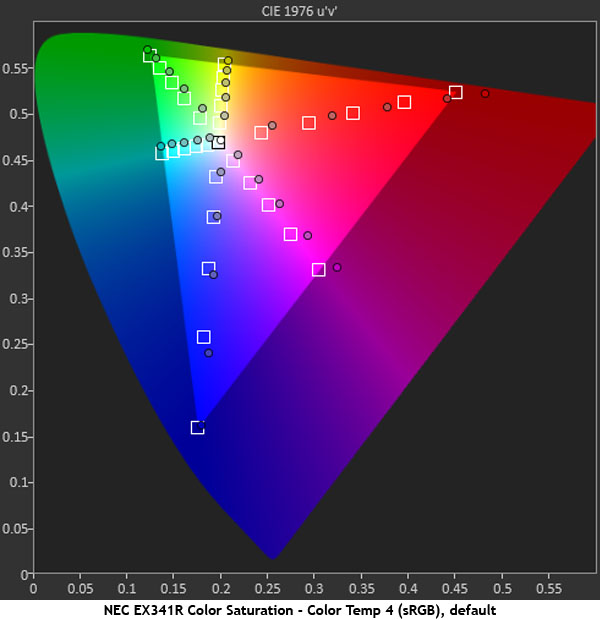
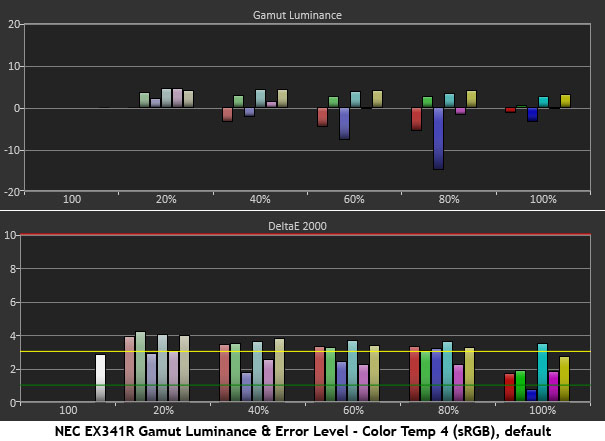
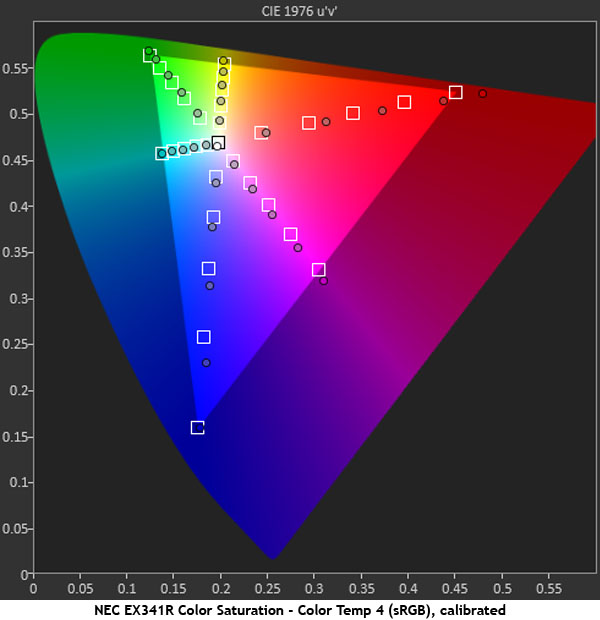
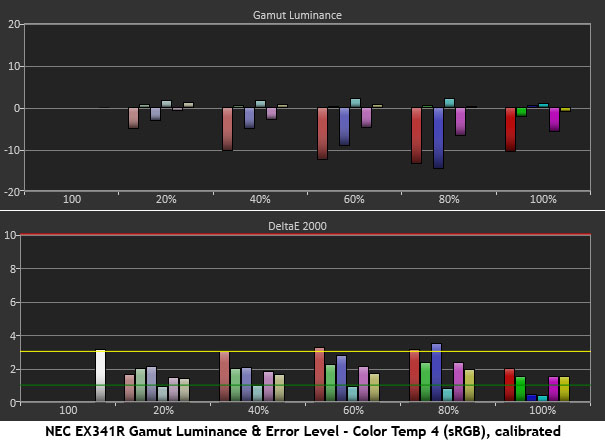
There are two main causes for what we’re seeing in the saturation and luminance charts. The native red primary is a little over-saturated and the gamma issues we described earlier contribute to some off-target results. Luminance levels have been properly engineered to compensate resulting in decent color accuracy. To the eye, only red looks a little too bold, though it is more apparent in test patterns than actual content. Again, we recommend calibrating the color temp 4 preset, or better yet, use SpectraView II to achieve an ideal gamut result.
Comparisons
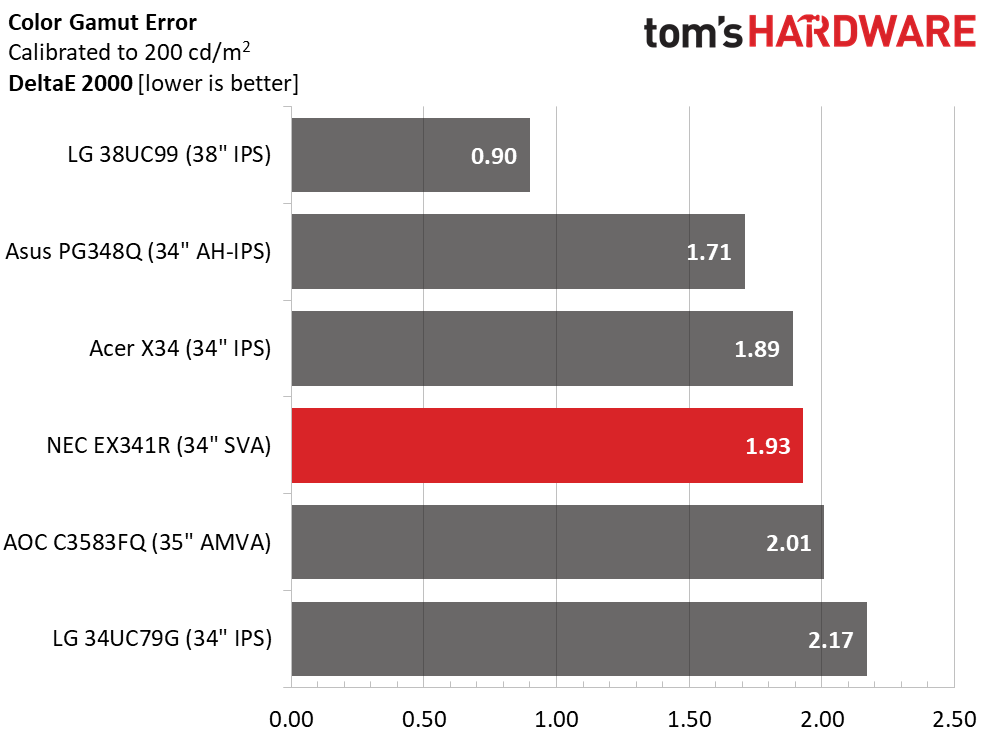
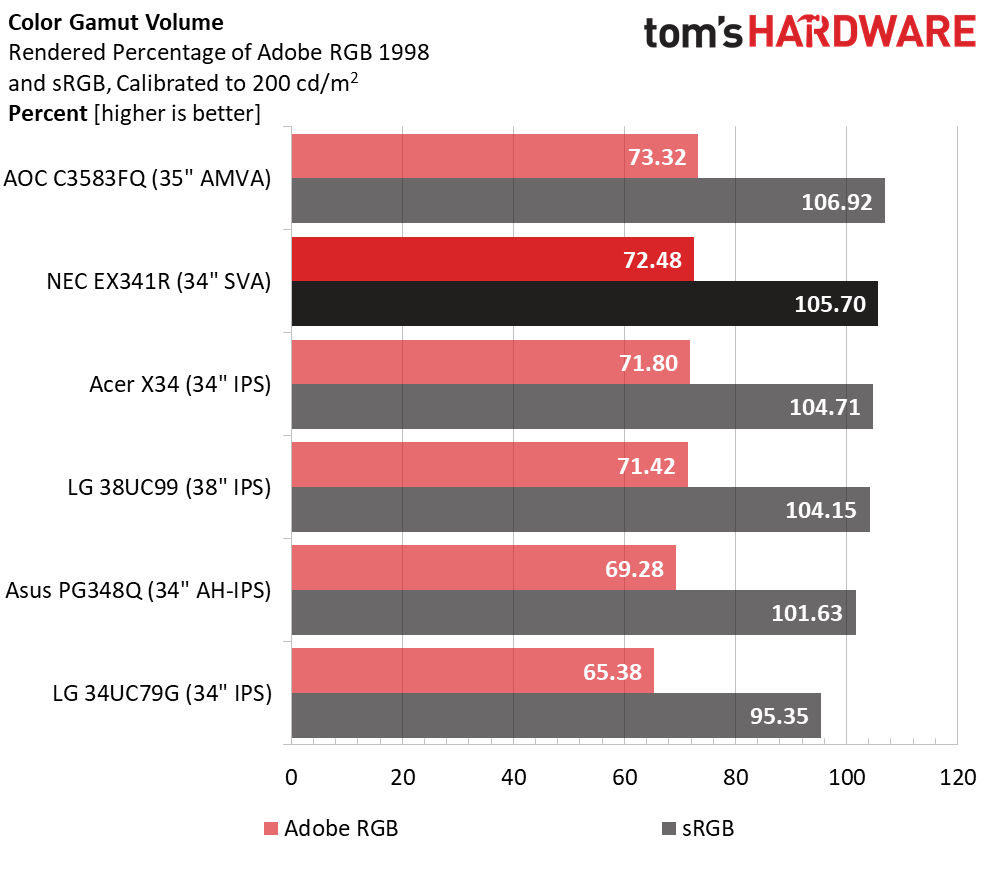
Our calibration takes the EX341R from 2.71 to 1.93dE; a nice gain though not one that will be terribly obvious. Adjustments are more worth doing to fix grayscale and gamma than color, which isn’t significantly affected.
The extra punch in red takes sRGB gamut volume to over 105%. Since none of the primaries are under-saturated, a custom color profile will help dial things in for critical work. While this NEC is aimed more at the business-class, it’s conceivable that it will be called upon for graphics production. It wouldn’t surprise us to see a PA-series monitor using this panel in the near future.
MORE: Best Gaming Monitors
MORE: Best Professional Monitors
MORE: How We Test Monitors
MORE: How To Choose A Monitor
MORE: All Monitor Content
Current page: Grayscale, Gamma & Color
Prev Page Brightness & Contrast Next Page Viewing Angles, Uniformity, Response & Lag
Christian Eberle is a Contributing Editor for Tom's Hardware US. He's a veteran reviewer of A/V equipment, specializing in monitors. Christian began his obsession with tech when he built his first PC in 1991, a 286 running DOS 3.0 at a blazing 12MHz. In 2006, he undertook training from the Imaging Science Foundation in video calibration and testing and thus started a passion for precise imaging that persists to this day. He is also a professional musician with a degree from the New England Conservatory as a classical bassoonist which he used to good effect as a performer with the West Point Army Band from 1987 to 2013. He enjoys watching movies and listening to high-end audio in his custom-built home theater and can be seen riding trails near his home on a race-ready ICE VTX recumbent trike. Christian enjoys the endless summer in Florida where he lives with his wife and Chihuahua and plays with orchestras around the state.
-
lhughey I'm a big fan of these 21:9 monitors. its a huge productivity conventional ratios, and I prefer it over dual monitors. I'm now wanting a larger monitor like a 38" or 42" monitor with slightly higher resolution to keep up with the size increase.Reply -
DJWarpen Expensive as hell :/ I bought Crossover's QHD 2560x1440 32inch 10Bit 75hz for little over 400 with VAT from korea.... And this display has Zero backlight bleed and not even one dead pixel... and colors are amazing!Reply -
C 64 I really like the 21:9 format and the size, but why curved ???Reply
If I liked something good and curved I would have bought a banana.... -
Novell SysOp fire phasers 5 time Why would these be used in a work "enterprise" environment? That's professional work and they would not want cheap azz monitors. They buy true 10-bit panels, not 8 or 8+FRC, and they use Quadro cards that can output 10-bit color. Geforce cannot do that. And I don't buy any monitor that is not 100% Adobe RGB. None of this 99% crap.Reply -
Dantte This monitor is a joke, right? For $100 more you could get a OMEN X35; slightly bigger, faster refresh, faster pixel response, MUCH lower input lag, and g-sync amongst other superior specs; so why would someone even consider this?Reply
You call this a "business" display, no "professional." Here's what I look for in a "business" display, cheap and does it get the job done, this display is not cheap and as far as "getting the job done" there is a ton of options out there for less, consider the Samsung C34F791. As for a "professional" display, this falls flat on its face for performance and should not even be considered! -
ESCAP0 This monitor IS a joke. 75hz refresh rate? Where the F do they think we live, the Stone Ages? ;-) If you are going to drop $1k you need at minimum 100-144hz that is 100% Adobe RGB with preferably an IPS Panel. Not his POS.Reply -
Brian_227 Amazon has an LG 32 inch for $199 right now. It has none of the features this thing does and a lower resolution, but the price is so ridiculously low.Reply -
delta5 Seems to me this monitor falls between two classes and is missing key features for both. Business class the key feature of cost verse competitors.Reply